1939 Zündapp 'Sieg Der Zuverlässigkeit'
Victory of reliability ...
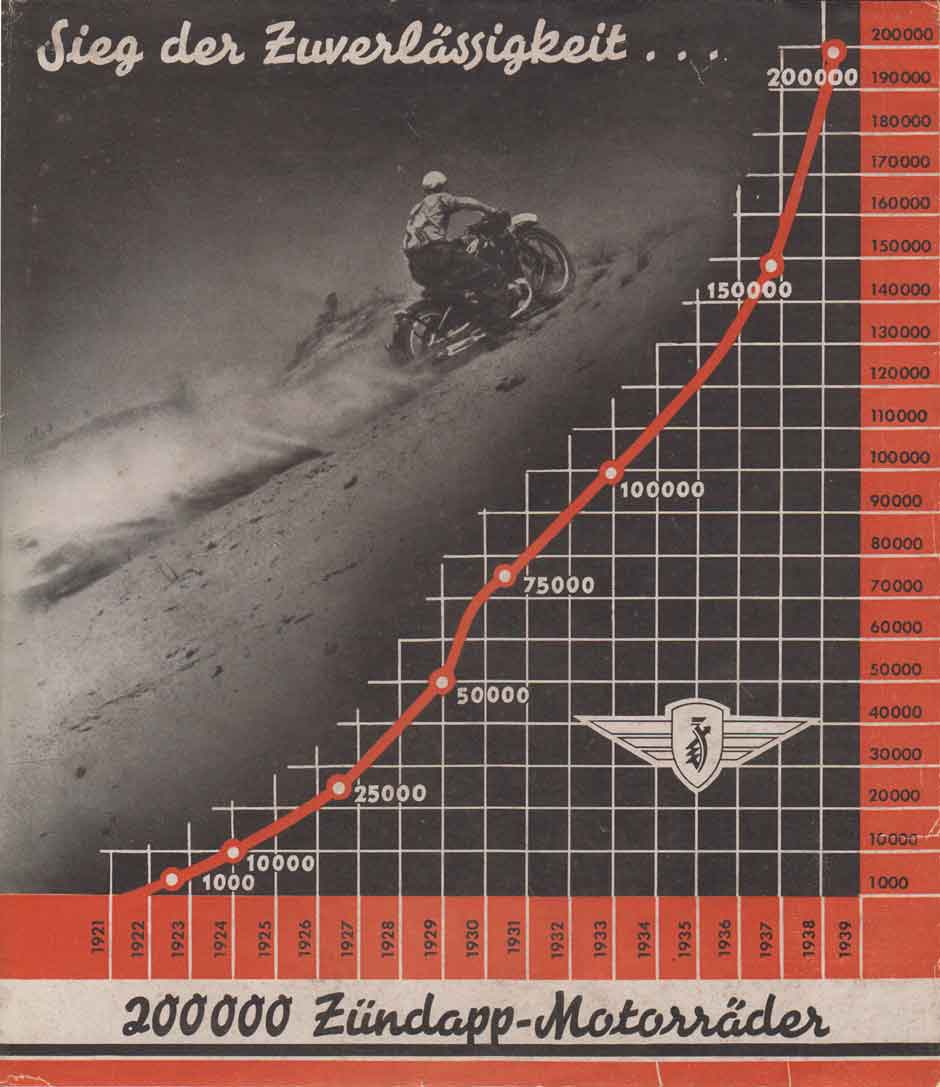
200,000th Zündapp motorcycle built in 1939
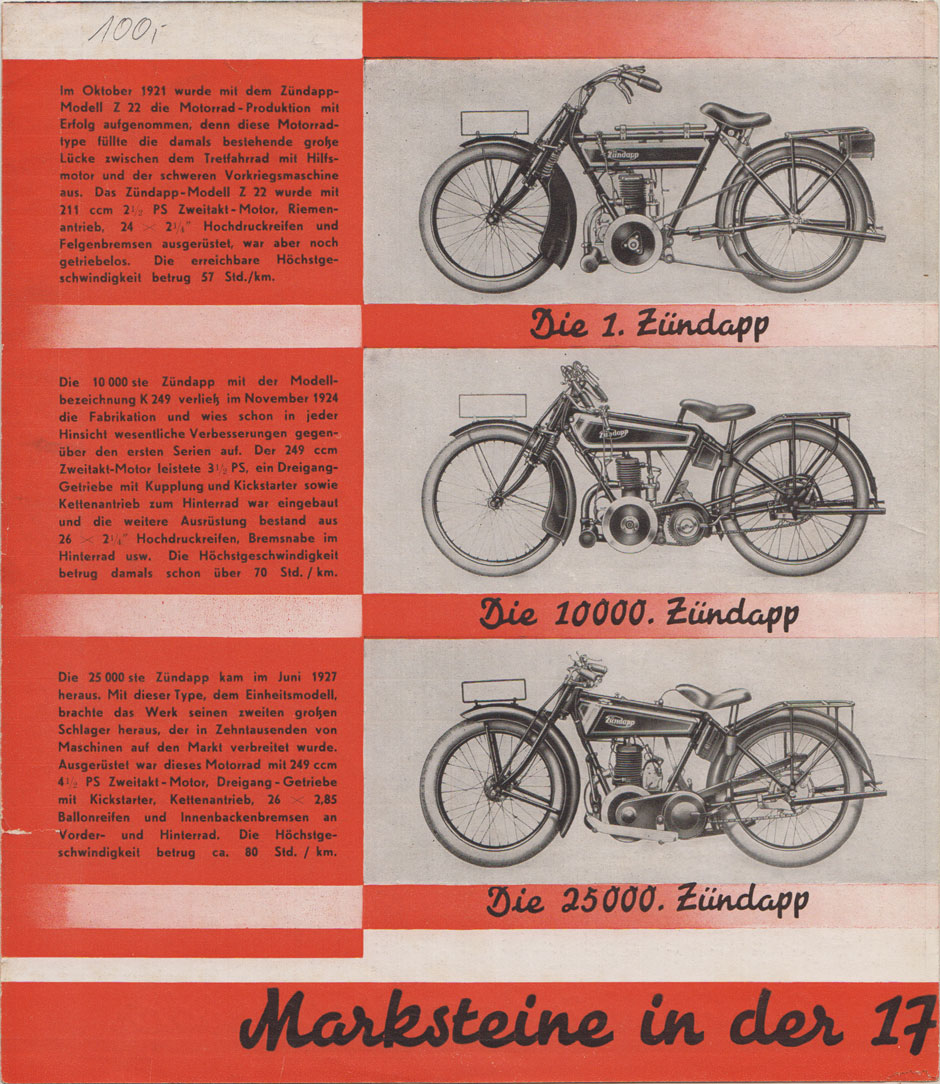
The First Zundapp
In October 1921 successful production started with the Zündapp Model Z 22. This type of motorcycle filled the existing large gap between the 'Tretfahrrad' (an early bicycle with an auxiliary motor) and the heavy war machine. The Zündapp Model Z 22 had a 211 cc 2 hp two-stroke motor, belt drive, 24 x 2.25 high pressure tire and rim brakes, but was still gearless. The top speed was 57kph.Milestones in the 17 year development of the Zündapp motorcycle
The 10,000th Zündapp
with the model name FC 249 hire in November 1924, the factory and had been in every respect aut substantial improvements over the first series. The 249 cc two-stroke engine developed PS, a three-speed transmission with clutch and kick starter and chain drive to the rear wheel was installed and the other equipment consisted of 26 high-pressure maturity, brake hub in the rear wheel, etc. The top speed was then already over 70 kph.The 25,000th Zündapp
came out in June 1927. Mil of this type, the unit model, the work of his second hit grohen brought out, which was used in tens of thousands of machines on the market. d was equipped with 249 cc this bike 1 4 hp two - stroke engine, three-speed - transmission with kick start, chain drive, 26 x 2.85 balloon tires and inner shoe brakes on front and rear. The top speed was about 80kph.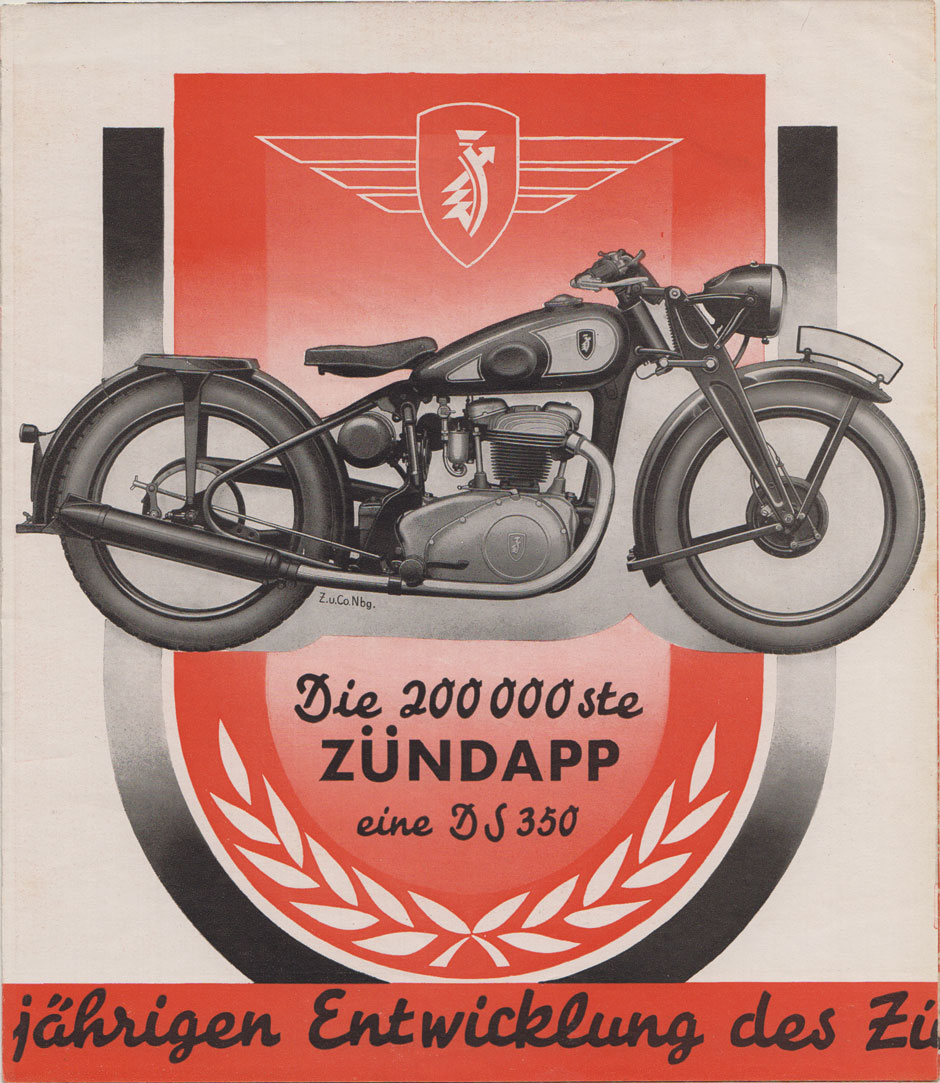 Milestones in the 17 year development of the Zündapp motorcycle
Milestones in the 17 year development of the Zündapp motorcycle
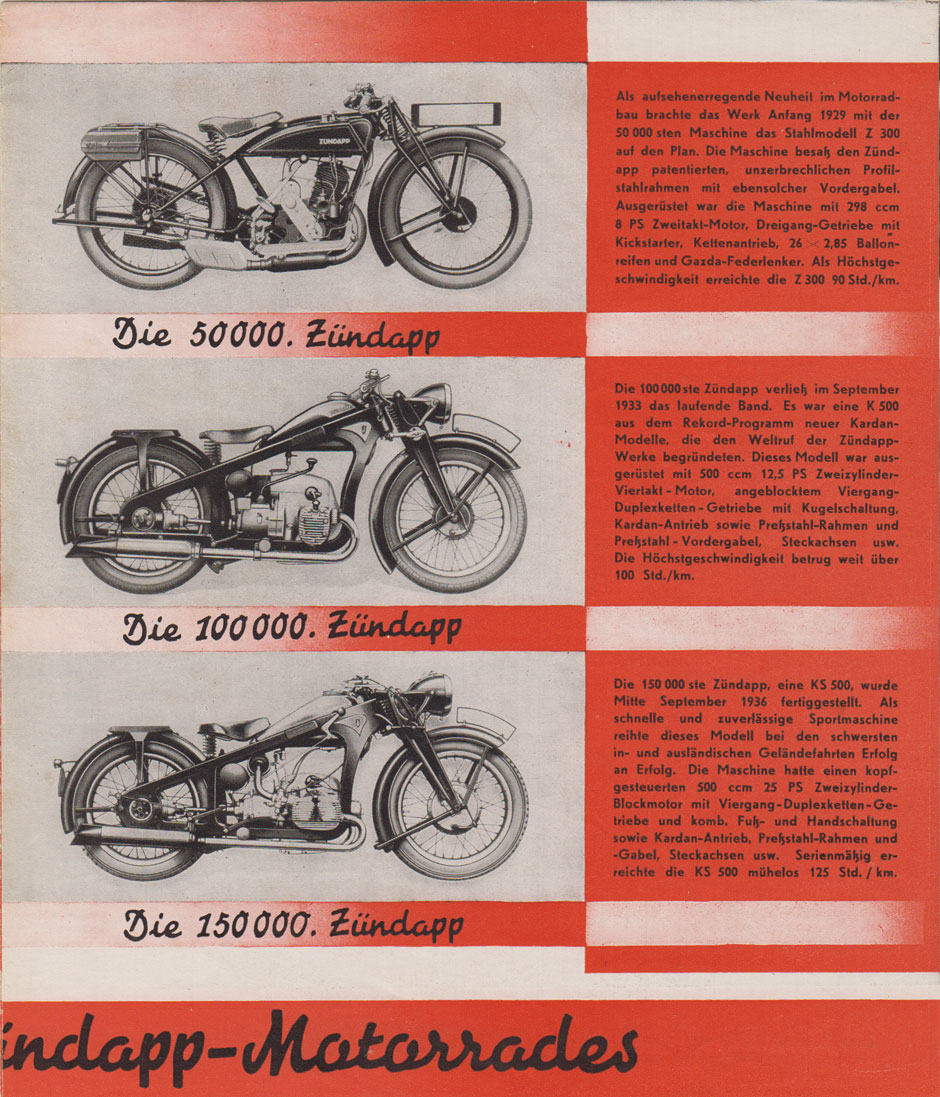 Milestones in the 17 year development of the Zündapp motorcycle
Milestones in the 17 year development of the Zündapp motorcycle
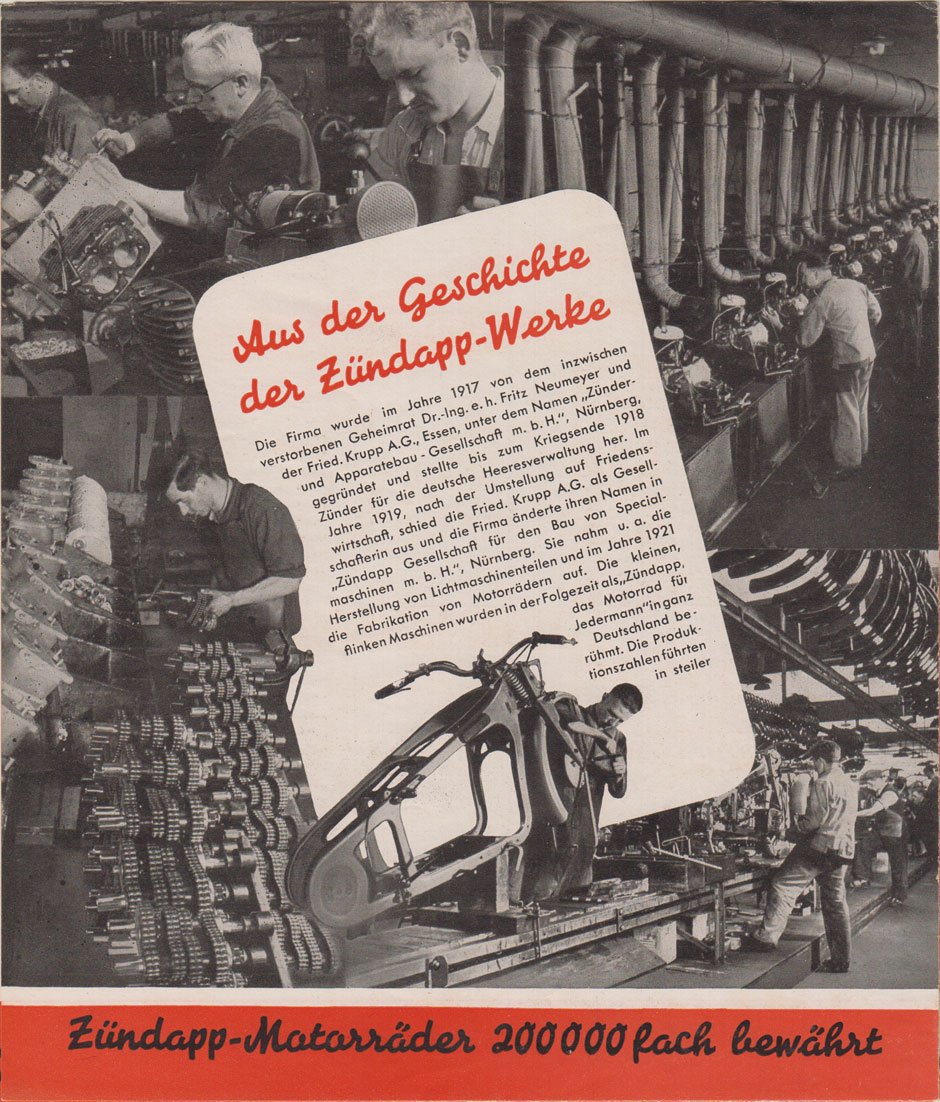
From the history of Zündapp works.
The company was founded in 1917 by the late privy counsellor Dr.-Ing. e. h. Fritz Neumeyer and Fried. Krupp AG, Essen, under the name "Ignition and Equipment - Company m. b. H. ", Nürnberg. They supplied ignition equipment to the German army administration until the war ended in 1918. In 1919, after the transition to a peace-economy, the cooperative partner Fried. Krupp A. G. and the company changed its name to "Zündapp company for the construction of special machines m. b. H. " in Nuremberg. At this time, they also started producing light machine parts and in 1921 the fabrication of motorcycles. In the following years, the small, nimble machines were known throughout Germany as "Zündapp, the motorcycle for everyone".The production pay resulted in steep (perhaps a factory error, the sentence ends abrubtyly and without punctuation)
Zündapp Motorcycles: Proven 200,000 times
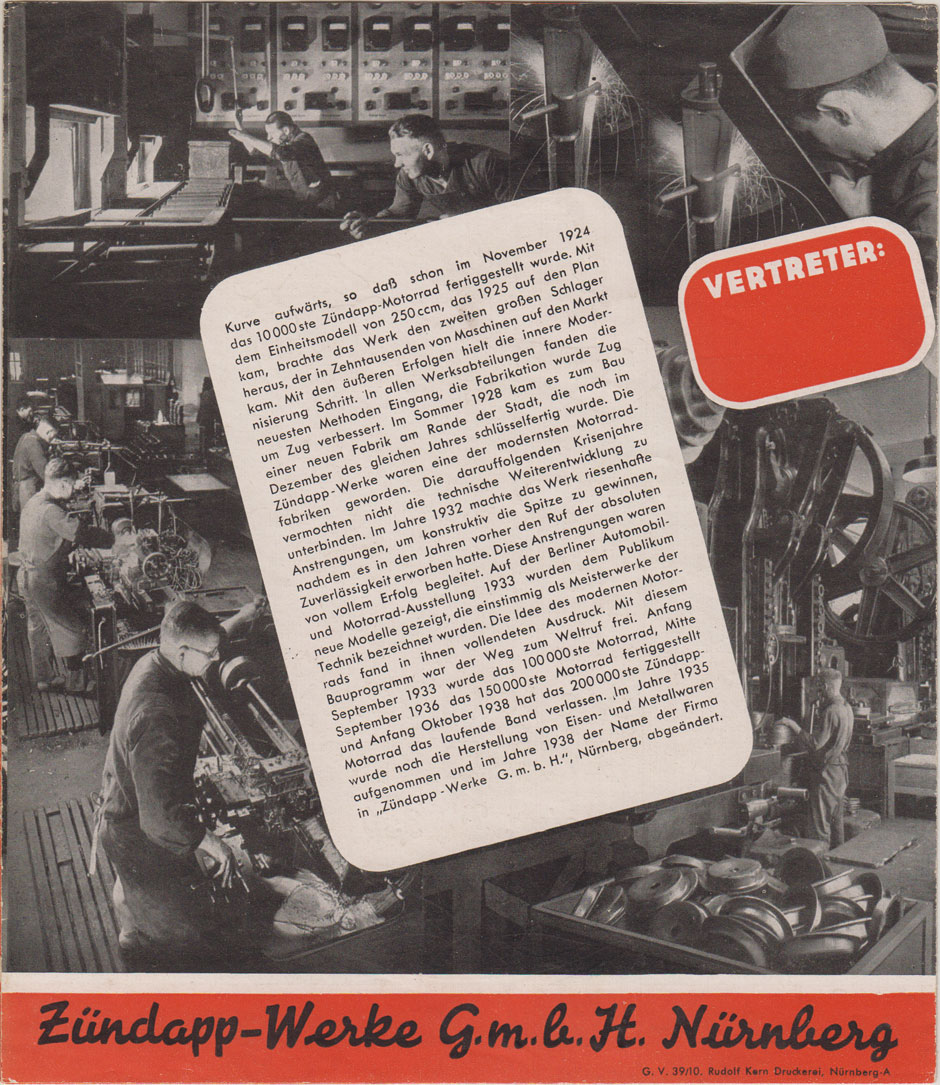 Curve upwards, so that already in November 1924
the 10,000th Zündapp motorcycle was completed. In 1925
the 250cc (K 249) model was conceived and the result was another major success with
tens of thousands of machines sold on the market.
With these manufacturing successes, modernizing the factory was a first priority.
In each of the plant's departments you can find the latest methods of receiving raw materials.
Production quality improved with each shipment. In the summer of 1928, construction began on
a new factory on the outskirts of Munich and was completed by December of the same year.
The Zündapp - Works had become one of the most modern motorcycle
factories in the world. The following years of economic crisis could not stop technical development.
In 1932 the factory made gigantic efforts to constructively reach the top,
as in the years before the demand for absolute reliability was required. These efforts were
met with full success. At the Berlin automotive
and Motorcycle Show in 1933, the public was
shown new models which were described unanimously as masterpieces of
engineering and technology. The concept of the modern motorcycle
had now reached perfection. This construction program was the way to free fame.
Beginning in September 1933, the 100,000th motorcycle, the middle
September 1936 completed the 150000th motorcycle
and in early October 1938, the 200,000th Zündapp
Motorcycle left the factory.
In 1935 Zündapp added the production of iron and steel products.
Curve upwards, so that already in November 1924
the 10,000th Zündapp motorcycle was completed. In 1925
the 250cc (K 249) model was conceived and the result was another major success with
tens of thousands of machines sold on the market.
With these manufacturing successes, modernizing the factory was a first priority.
In each of the plant's departments you can find the latest methods of receiving raw materials.
Production quality improved with each shipment. In the summer of 1928, construction began on
a new factory on the outskirts of Munich and was completed by December of the same year.
The Zündapp - Works had become one of the most modern motorcycle
factories in the world. The following years of economic crisis could not stop technical development.
In 1932 the factory made gigantic efforts to constructively reach the top,
as in the years before the demand for absolute reliability was required. These efforts were
met with full success. At the Berlin automotive
and Motorcycle Show in 1933, the public was
shown new models which were described unanimously as masterpieces of
engineering and technology. The concept of the modern motorcycle
had now reached perfection. This construction program was the way to free fame.
Beginning in September 1933, the 100,000th motorcycle, the middle
September 1936 completed the 150000th motorcycle
and in early October 1938, the 200,000th Zündapp
Motorcycle left the factory.
In 1935 Zündapp added the production of iron and steel products.To reflect this improvement, in 1938, the company added the name "Zündapp - Works G. m. b. H. ", Nürnberg.

